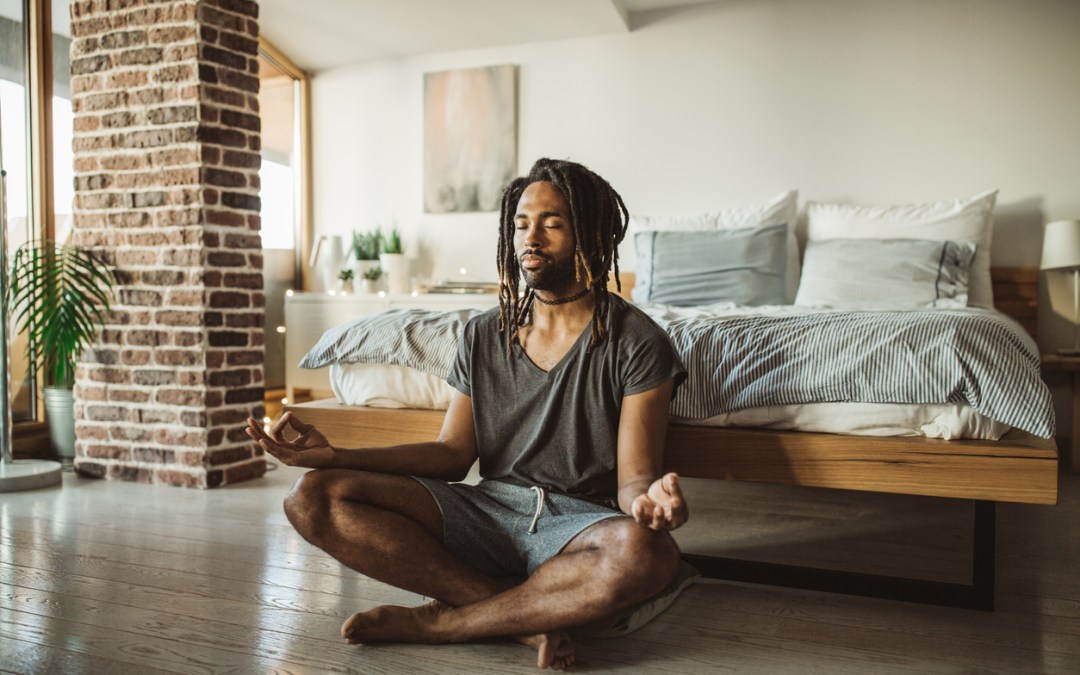Mindfulness meditation trains us to use the present moment to still the mind and immerse ourselves in every experience. Its benefits go far beyond momentary calm. Research has shown that meditation improves attention span and memory, reduces anxiety and stress, and can even help reduce chronic pain and other ailments. But many people who hear about mindfulness may not understand what it’s all about.
“It isn’t about becoming a different person, but rather getting a healthy sense of perspective. It’s about learning to observe your thoughts and feelings without judgment.”
— Atheer Yacoub, EHE Health Mentor
How do you actually practice mindfulness meditation? What do I do with my body? you may be wondering. Here’s our advice for a simple start:
Find a seat. This could be your favorite chair, a cushion, a corner of your house dedicated to meditation, or even a park bench.
Position your lower body. If you’re on a cushion on the floor, cross your legs comfortably in front of you. If you’re using a chair, allow your feet to rest on the floor.
Observe your posture. The spine has a natural curvature. Acknowledge it. Imagine your head and shoulders resting comfortably on top of your spinal column. Relax the abdomen.
Let your arms drop naturally. Your hands can rest on top of your legs, or in your lap. Try to find a place where you’re not leaning forward or back.
Allow your gaze to fall. As you bring your gaze downward, you can allow your eyes to lower as well, closing them completely if you’d like. However (and contrary to popular belief), it’s not necessary to close your eyes when meditating.
Simply exist for a few moments. Observe the sensations in your body. Deliberately acknowledge your breath. Notice your heartbeat.
Focus your attention on your breath. Feel the intricacies of your breathing pattern, the physical sensation of each breath, and the movement of the air in and out of your lungs.
Notice when your thoughts wander. Without judgment, acknowledge when your focus wavers. There is no need to completely eliminate your thoughts; you may find it impossible at first. When it does happen, simply redirect attention back to your breathing.
Notice sensations, but refrain from reacting. If you feel the need to move your body, due to an itch or some sort of discomfort, pause briefly and regard the sensation. Shift your body if necessary.
Every session will be different. Sometimes you’ll find yourself unable to focus for more than a moment at a time. This is completely normal — notice it and move on, staying as present as possible. Start again without expectation.
Complete your practice. Before starting your day again, bring yourself back slowly. Observe your surroundings. Try to see everything around you as if noticing it for the first time.

